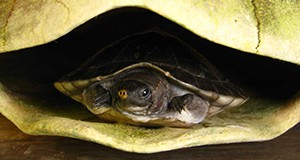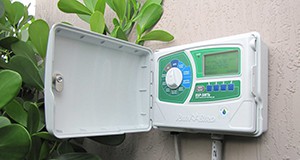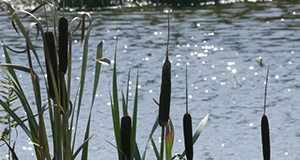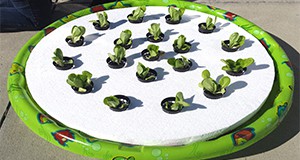 School gardens are a great way to get youth interested in where their food comes from. Hydroponics, or the cultivation of plants in liquid nutrient solutions rather than in soil, is a fascinating way to teach students about food systems. This 4-page fact sheet lists the materials, tools, and construction steps needed to grow a variety of crops in a wading pool hydroponic garden. Written by Edmund L. Thralls, and published by the UF Department of Environmental Horticulture, October 2015.
School gardens are a great way to get youth interested in where their food comes from. Hydroponics, or the cultivation of plants in liquid nutrient solutions rather than in soil, is a fascinating way to teach students about food systems. This 4-page fact sheet lists the materials, tools, and construction steps needed to grow a variety of crops in a wading pool hydroponic garden. Written by Edmund L. Thralls, and published by the UF Department of Environmental Horticulture, October 2015.
http://edis.ifas.ufl.edu/ep525
Category: Environment
Arrow Arum: Peltandra virginica
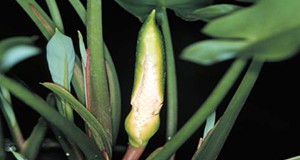 Arrow arum is a native aquatic and wetland plant that is a welcome addition to water gardens, aquatic ponds, and wetland restoration and mitigation sites. The species is broadly adapted and extremely common throughout Florida, and its perennial nature assures a stellar performance year after year. This new 3-page fact sheet provides an overview of this plant and discusses its distribution, habitat, propagation, and other uses. Written by Kimberly A. Moore, Luci E. Fisher, Carl J. Della Torre III, and Lyn A. Gettys, and published by the UF Department of Agronomy, October 2015.
Arrow arum is a native aquatic and wetland plant that is a welcome addition to water gardens, aquatic ponds, and wetland restoration and mitigation sites. The species is broadly adapted and extremely common throughout Florida, and its perennial nature assures a stellar performance year after year. This new 3-page fact sheet provides an overview of this plant and discusses its distribution, habitat, propagation, and other uses. Written by Kimberly A. Moore, Luci E. Fisher, Carl J. Della Torre III, and Lyn A. Gettys, and published by the UF Department of Agronomy, October 2015.
http://edis.ifas.ufl.edu/ag400
Contaminants in the Urban Environment: Microplastics

Plastic, plastic everywhere! We live in a world where we are surrounded by plastic: from packaging materials and cutlery to plastic appliances and medical devices. Since the mid-twentieth century, plastic has been a boon to humanity and an integral part of our modern lives. However, plastic debris is a major concern due to its abundance and persistence in the environment. Plastic contaminants not only include plastic debris characterized by large size but also small pieces of plastic in the millimeter size range; these inconspicuous “microplastics” have become a major concern because of their widespread presence in different environments and diverse organisms. This six-page fact sheet discusses the sources of microplastics, their effects on the environment, and ways to minimize microplastics pollution and exposure. Written by Yun-Ya Yang, Ignacio A. Rodriquez, Maia McGuire, and Gurpal S. Toor, and published by the Soil and Water Science Department.
http://edis.ifas.ufl.edu/ss649
Preventing Foodborne and Non-foodborne Illness: Vibrio parahaemolyticus
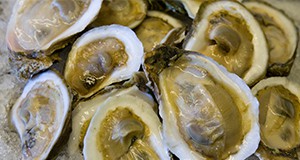 Vibrio parahaemolyticus is a naturally occurring bacterium that inhabits coastal brackish marine waters throughout the world and is commonly found in the United States and Canada. If ingested in sufficient numbers, this bacterium can cause illness such as gastroenteritis with symptoms such as cramps, vomiting, and nausea. Illnesses linked with this organism are usually associated with the consumption of raw or improperly cooked seafood, particularly raw oysters. This 3-page fact sheet is a major revision that discusses Vibrio parahaemolyticus, illness caused by the bacterium, factors that increase risk of infection, methods of infection, seafood and shellfish handling recommendations, and prevention. Written by Anita C. Wright, Renée M. Goodrich, Michael A. Hubbard, and Keith R. Schneider, and published by the UF Department of Food Science and Human Nutrition. Original publication date: July 2009. Revised October 2015.
Vibrio parahaemolyticus is a naturally occurring bacterium that inhabits coastal brackish marine waters throughout the world and is commonly found in the United States and Canada. If ingested in sufficient numbers, this bacterium can cause illness such as gastroenteritis with symptoms such as cramps, vomiting, and nausea. Illnesses linked with this organism are usually associated with the consumption of raw or improperly cooked seafood, particularly raw oysters. This 3-page fact sheet is a major revision that discusses Vibrio parahaemolyticus, illness caused by the bacterium, factors that increase risk of infection, methods of infection, seafood and shellfish handling recommendations, and prevention. Written by Anita C. Wright, Renée M. Goodrich, Michael A. Hubbard, and Keith R. Schneider, and published by the UF Department of Food Science and Human Nutrition. Original publication date: July 2009. Revised October 2015.
http://edis.ifas.ufl.edu/fs146
What Else Can Surface Water Buffer Systems Do?: Exploring Multiple Ecosystem Services
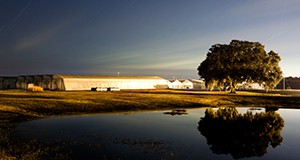 As society confronts the consequences of global warming, deteriorating water quality, and impoverished biodiversity, there is a growing urgency to develop and expand water buffers' multifunctional ecosystem services. However, limited information is available on other potential co-benefits associated with the use of buffers, particularly VFSs. This 5-page fact sheet provides information on buffers' multiple ecosystem benefits, such as niche products production, carbon sequestration, and flood risk mitigation, as well as recommendations on future research needs necessary to enhance multiple ecosystem services and benefits of buffers. Written by Lei Wu, Rafael Muñoz-Carpena, and Yuncong Li, and published by the UF Department of Soil and Water Science, November 2015.
As society confronts the consequences of global warming, deteriorating water quality, and impoverished biodiversity, there is a growing urgency to develop and expand water buffers' multifunctional ecosystem services. However, limited information is available on other potential co-benefits associated with the use of buffers, particularly VFSs. This 5-page fact sheet provides information on buffers' multiple ecosystem benefits, such as niche products production, carbon sequestration, and flood risk mitigation, as well as recommendations on future research needs necessary to enhance multiple ecosystem services and benefits of buffers. Written by Lei Wu, Rafael Muñoz-Carpena, and Yuncong Li, and published by the UF Department of Soil and Water Science, November 2015.
http://edis.ifas.ufl.edu/ss647
Vegetative Filter Strips: A Best Management Practice for Controlling Nonpoint Source Pollution
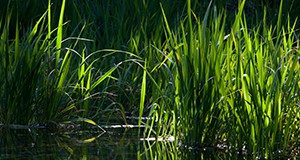 Increasing numbers of pollutants have been observed in natural water systems. As awareness of agricultural sources of water pollution has grown, Best Management Practices (BMPs) have been specifically designed to address agricultural water pollutants and protect water quality. This 4-page fact sheet introduces one of the BMPs, Vegetative Filter Strips (VFSs), which efficiently control nonpoint pollution such as sediments, nutrients, and pesticides. The publication covers primary functions, key design factors, and maintenance of VFSs. Written by Lei Wu, Rafael Muñoz-Carpena, and Yuncong Li, and published by the UF Department of Soil and Water Science, October 2015.
Increasing numbers of pollutants have been observed in natural water systems. As awareness of agricultural sources of water pollution has grown, Best Management Practices (BMPs) have been specifically designed to address agricultural water pollutants and protect water quality. This 4-page fact sheet introduces one of the BMPs, Vegetative Filter Strips (VFSs), which efficiently control nonpoint pollution such as sediments, nutrients, and pesticides. The publication covers primary functions, key design factors, and maintenance of VFSs. Written by Lei Wu, Rafael Muñoz-Carpena, and Yuncong Li, and published by the UF Department of Soil and Water Science, October 2015.
http://edis.ifas.ufl.edu/ss646
Contaminants in the Urban Environment: Bisphenol-A
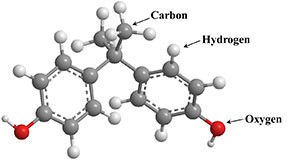
Bisphenol-A (BPA) is a man-made chemical widely used as a component in many products of daily use in households, such as plastic bottles and metallic canned foods. BPA can leach from bottles and cans into the environment, increasing our exposure to BPA. BPA is known to harm exposed animals in laboratory settings as well as in the wild, although its potential to harm humans remains controversial. This seven-page fact sheet will discuss the occurrence, use, and potential harmful effects of BPA and will suggest ways to reduce human and environmental exposure to BPA. Written by Ignacio A. Rodriquez-Jorquera, Yun Ya Yang, and Gurpal S. Toor and published by the Soil and Water Science Department.
http://edis.ifas.ufl.edu/ss648
Frequently Asked Questions about Vibrio in Florida

Florida is a tropical paradise that attracts marine enthusiasts and seafood lovers from around the world. Its extensive waterways not only offer unique areas for us to explore but also provide essential habitat for marine life, including marine bacteria that keep the habitat in healthy balance by breaking down organic matter and providing food for larger organisms. One type of marine bacteria known as Vibrio sometimes causes infections and seafood sickness in people with weakened immune systems, but Vibrio should not keep Floridians and visitors from enjoying their favorite activities because Vibrio infections are rare and easy to prevent. This 7-page fact sheet written by Gabby Barbarite, Peter J McCarthy, Holly Abeels, and Anita Wrightwill and published by the Florida Sea Grant College Program will help you ensure that your time on the water is as safe and enjoyable as possible.
http://edis.ifas.ufl.edu/SG140
The Argentine Black and White Tegu in South Florida: Population Growth, Spread, and Containment

Florida is home to more nonnative species of reptiles and amphibians than anywhere else in the world because of its subtropical climate, large areas of disturbed habitats, and thriving trade in exotic pets. Although pythons have received the majority of public attention, invasive lizards also pose a significant threat to south Florida’s native wildlife and ecosystems, and a good example is the Argentine black and white tegu. Learn more about this exotic lizard in this 3-page fact sheet written by Rebecca G. Harvey and Frank J. Mazzotti and published by the Wildlife Ecology and Conservation Department.
http://edis.ifas.ufl.edu/uw405
The Social Organization of Honey Bees

A honey bee colony is a superorganism, which means that together its members function like a single animal. Bees within a colony work together like the cells in a human body. They warm the colony in the winter by vibrating their wings to generate heat and cool it in the summer by ferrying in droplets of water and fanning air over them. Worker bees fan air into and out of the colony entrance in distinct inhalations and exhalations. Colonies reproduce by swarming to create new daughter colonies that in turn thermoregulate, breathe, and reproduce just as a single autonomous animal does. In three pages this fact sheet explains the intricate caste system and age-based division of labor that allows colonies of humankind’s best-loved pollinators to function and thrive. Written by Ashley N. Mortensen, Bryan Smith, and James D. Ellis and published by the Entomology and Nematology Department.
http://edis.ifas.ufl.edu/in1102
Biology of the Hicatee: A Critically Endangered River Turtle of Belize
The hicatee (Dermatemys mawii) is a Central American river turtle and one of the 25 most endangered turtle species in the world. Over-hunting for meat, eggs, and shells is driving the turtles toward extinction. This 3-page fact sheet about the hicatee includes its natural history, reproductive habits, and ecology and describes the international conservation efforts to save the fascinating but fast-disappearing turtle. Written by Venetia Briggs-Gonzalez, Nathan Schwartz, Rebecca G. Harvey, and Frank J. Mazzotti and published in November 2015 by the Wildlife Ecology and Conservation Department.
http://edis.ifas.ufl.edu/uw404
New Featured Creature publications added
The following publications are now available in EDIS:
Released November 9:
- Spicebush Swallowtail Papilio (Pterourus) Troilus Linnaeus 1758
- Lesser Wax Moth Achroia grisella Fabricius
- Oblong-Winged Katydid (suggested common name) Amblycorypha oblongifolia
- Florida Flower Thrips (suggested common name) Frankliniella bispinosa Morgan
- Laurelcherry Smoky Moth, Neoprocris floridana Tarmann 1984
- Pineapple Mealybug, Dysmicoccus brevipes (Cockerell)
Released November 10:
- Laurelcherry Smoky Moth, Neoprocris floridana Tarmann 1984
- Pineapple Mealybug, Dysmicoccus brevipes (Cockerell)
These publications on EDIS are alternate versions of pages published first on the Featured Creatures website.
Frequently Asked Questions about Soil Moisture Sensor Irrigation Controllers (SMS)
![]()
A soil moisture sensor (SMS) is a device that detects how much moisture is in the soil and prevents an irrigation system from running when it is not needed. This 4-page fact sheet written by Paul Monaghan, Ondine Wells, Michael Dukes, Maria Morera, and Laura Warner and published by the Department of Agricultural Education and Communications explains how the technology functions as well as how to install, program, operate, and maintain an SMS for a money- and water-wise sustainable home landscape that’s lush and beautiful.
http://edis.ifas.ufl.edu/wc238
Frequently Asked Questions about Evapotranspiration (ET) Irrigation Controllers
Evapotranspiration is the amount of water that is released into the atmosphere through evaporation and plant transpiration. An evapotranspiration irrigation controller is a device that uses data about the landscape, the type of irrigation system, and local weather conditions to determine when and how much to irrigate. This 5-page fact sheet written by Paul Monaghan, Ondine Wells, Michael Dukes, Maria Morera, and Laura Warner and published by the Department of Agricultural Education and Communications explains how the technology functions as well as how to install, program, operate, and maintain an ET controller for a money- and water-wise sustainable home landscape that’s lush and beautiful.
http://edis.ifas.ufl.edu/wc237
Sand-Clay Mix in Phosphate Mine Reclamation: Characteristics and Land Use
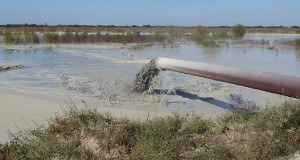
Phosphate rock is a key component in producing fertilizer and many other economically important products. Getting phosphate rock out of the ground produces a by-produce called phosphate clay, which mining operations must return to the landscape. However, phosphate clay retains large amounts of water, making them unsuitable for use as farmland or wildlife habitat. This 6-page fact sheet explains how using a sand-clay mix can more efficiently restore the landscape and put it to beneficial use. Written by Casey Beavers, Edward A. Hanlon, Matt Wilson, James “Bud” Cates, and George J. Hochmuth, and published by the UF Department of Soil and Water Sciences, July 2015.
http://edis.ifas.ufl.edu/ss636
Creeping Indigo, A Poisonous Plant of Concern in Florida Pastures
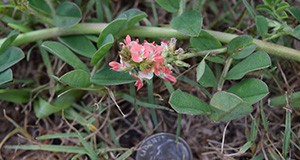 A recent rise in suspected horse poisonings has brought new attention to creeping indigo (Indigofera spicata), a toxic plant which has reportedly been in Florida for as long as 90 years. This new 5-page fact sheet covers plant description, signs of creeping indigo toxicity, and roles of creeping indigo’s toxins, as well as treatment and management. Written by Robert MacKay, Ed Jennings, Brent Sellers, Jason Ferrell, and Amanda House, and published by the UF Department of Agronomy, August 2015.
A recent rise in suspected horse poisonings has brought new attention to creeping indigo (Indigofera spicata), a toxic plant which has reportedly been in Florida for as long as 90 years. This new 5-page fact sheet covers plant description, signs of creeping indigo toxicity, and roles of creeping indigo’s toxins, as well as treatment and management. Written by Robert MacKay, Ed Jennings, Brent Sellers, Jason Ferrell, and Amanda House, and published by the UF Department of Agronomy, August 2015.
http://edis.ifas.ufl.edu/ag399
Clavate Tortoise Beetle, Plagiometriona clavata (Fabricius)
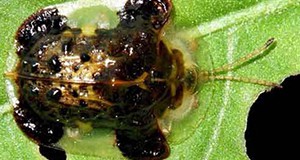
Plagiometriona clavata (Fabricius) is common and can be recognized easily by its general form and appearance. Written for Featured Creatures Collection by Robert E. Woodruff. Original publication date December 2006, revised August 2015. (Photo Credit: David Cappaert, www.forestryimages.org)
http://edis.ifas.ufl.edu/in710
Strategies to Encourage Adoption of Stormwater Pond Best Management Practices (BMPs) by Homeowners
Man-made ponds can be a useful way to collect, store, and treat stormwater runoff in residential areas. However, these ponds can become polluted when runoff contains fertilizers, pesticides, and pet waste from the neighborhood. This 8-page fact sheet outlines several best management practices (BMPs) for reducing stormwater pond pollution. Based on a survey of residents who live near stormwater ponds, the authors recommend strategies Extension educators can use to encourage residents to adopt these BMPs. Written by Emily Ott, Paul Monaghan, Ondine Wells, Gail Hansen, Laura Warner, and Michelle Atkinson, and published by the UF Department of Agricultural Education and Communication, July 2015.
http://edis.ifas.ufl.edu/wc214
Pillbug, Roly-Poly, Woodlouse Armadillidium vulgare (Latreille) (Malacostraca: Isopoda: Armadillidiidae)
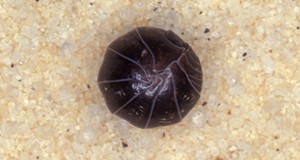 The roly poly is an isopod, a type of non-insect arthropod also known as a terrestrial crustacean. It is called a roly-poly because it rolls into ball when disturbed. This defensive behavior also makes it look like a pill, which is why it is sometimes called a pillbug. In Europe, the name woodlouse is used for both roly polies and sowbugs because these arthropods are frequently found under logs. Roly polies are nocturnal, though they may be found during the day in the soil or under debris. They are beneficial in the garden or landscape. This 3-page fact sheet about the humble roly poly was written by Julie A. Franklin, Morgan A. Byron, and Jennifer Gillett-Kaufman and published by the UF Department of Entomology and Nematology, August 2015. (Photo by James Castner, University of Florida)
The roly poly is an isopod, a type of non-insect arthropod also known as a terrestrial crustacean. It is called a roly-poly because it rolls into ball when disturbed. This defensive behavior also makes it look like a pill, which is why it is sometimes called a pillbug. In Europe, the name woodlouse is used for both roly polies and sowbugs because these arthropods are frequently found under logs. Roly polies are nocturnal, though they may be found during the day in the soil or under debris. They are beneficial in the garden or landscape. This 3-page fact sheet about the humble roly poly was written by Julie A. Franklin, Morgan A. Byron, and Jennifer Gillett-Kaufman and published by the UF Department of Entomology and Nematology, August 2015. (Photo by James Castner, University of Florida)
http://edis.ifas.ufl.edu/in1099
Blue Morpho Butterfly Morpho peleides Kollar
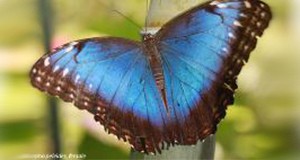
The blue morpho butterfly, also known as the peleides blue morpho or common blue morpho, is a brightly colored butterfly abundant in tropical environments in Central and South America. It can be seen flying in open areas such as paths, trails, forest edges, and rivers. In the United States, it is often featured in museums and zoos that have butterfly houses or butterfly rainforests. This five-page fact sheet about the popular butterfly was written by Haleigh A. Ray and Jacqueline Y. Miller and published by the UF Department of Entomology and Nematology, September 2015. (Photo credit: Andrei Sourakov, McGuire Center or Lepidoptera and Biodiversity, Florida Museum of Natural History, University of Florida)
http://edis.ifas.ufl.edu/in1101
